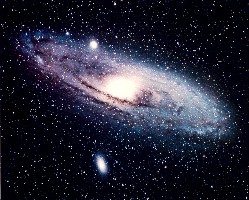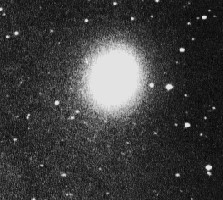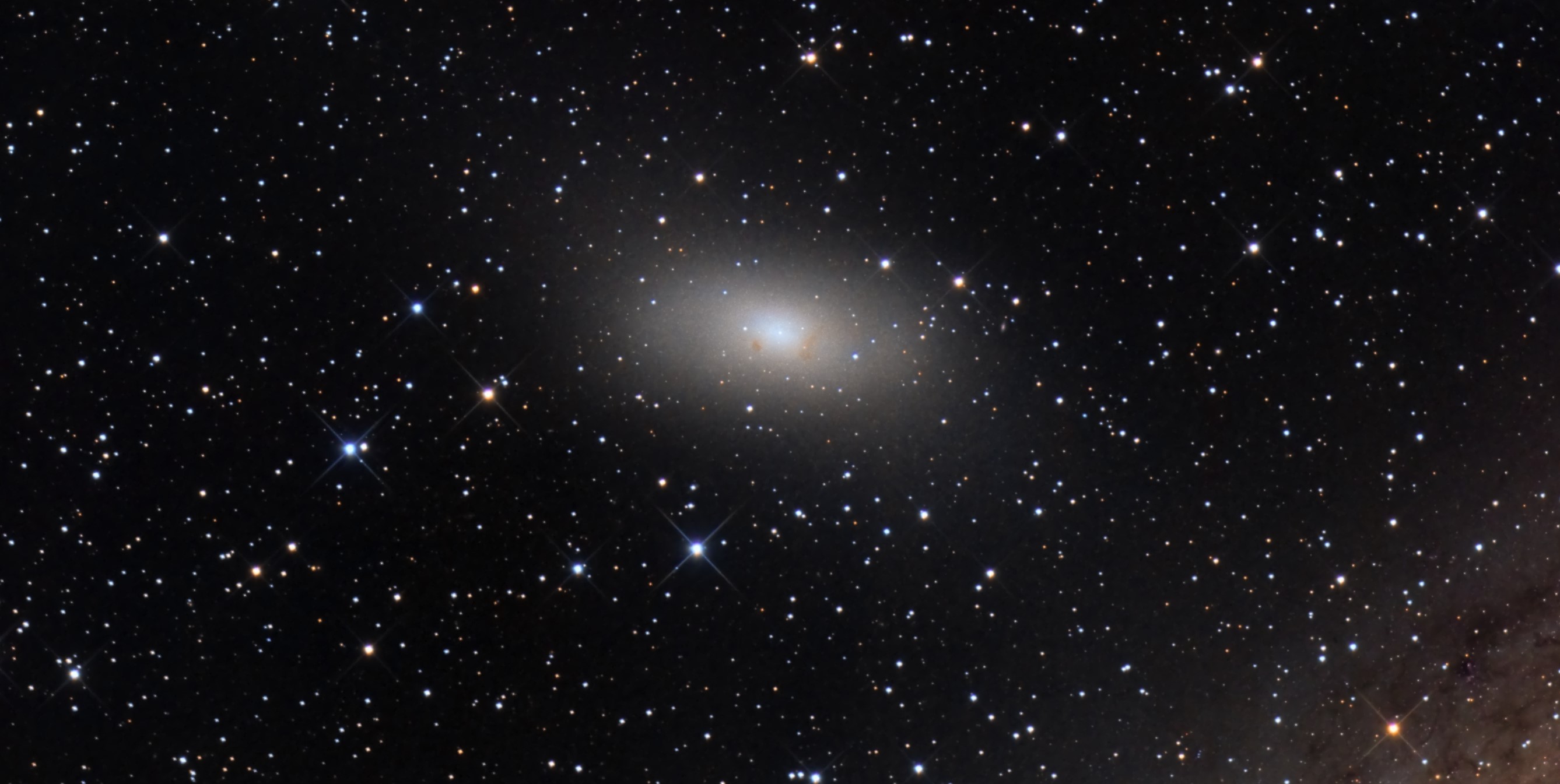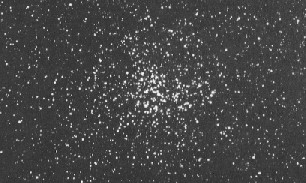
I've seen this galaxy on several occasions in the past, but looking back through my StarLogs, I realized I never did actually log it. Although visible at 50x, it was very faint tonight, appearing more as a lens reflection than a galaxy. I've seen it look a lot more obvious at this magnification, so that meant this may indeed be a challenging night. The best view was with my 15mm eyepiece. It looked oval and a bit mottled at the edges. Averted vision revealed a stellar core, with nebulosity rapidly fading from the center.

The Andromeda Sisters were their usual stunning selves. At 50x, all three galaxies were barely able to fit into the field. M31's core was bright and large, and the dust lane sharply cut off details along one edge. No real details were visible in the spiral arms but they did visibly extend far past the field of view.

At 50x, M32 was easily visible as a small elliptical sporting a stellar core.

At 50x, M110 was bashful, but could still be barely detected with direct vision. Averted vision revealed an elliptical shape to her as well.
This is a nice double, even at low power. At 50x, I can detect both components easily. The primary is bright yellow-white and the secondary is several magnitudes fainter, appearing white. It looks almost like a star and planet.

The best view is with the barlowed 25mm eyepiece (150x). The nebula has a distinct 2-lobed appearance. Both ends are shorn off sharply, giving it an apple core shape. No real mottling or detail could be detected, although one edge did appear brighter than the rest. Using my O-III filter blocked the nebula out completely.
I started marching my telescope towards NGC 278 and NGC 185, but at this point, the clouds were moving in quickly. Soon, Andromeda and Cassiopeia were completely covered. I turned my telescope towards Auriga, the only remaining constellation visible, even though it was still low in the sky.

At 125x, it takes up over half the field, with hundreds of stars visible. Spectacular! The brightest star is right in the middle of the cluster. Various streams of 4-5 stars arced in various directions. The cluster was not quite round, but still impressive. Nudging the power up to 150x, the entire field was taken up by the cluster. The longer you look, the more stars you can see.